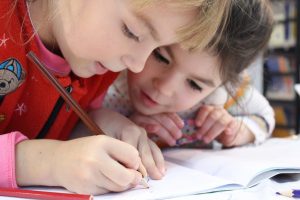
Ventilation in schools has been receiving growing attention in the last few months. It is seen as a measure against Coronavirus, which has been affecting kids' education during during the pandemic.
As we are approaching the summer and the vaccination campaigns proceed, many countries are cautiously lifting restrictions. Restaurants and shops are now open to the public for a few more hours, and kids are gradually going back to school as e-learning hours are decreased.
But while getting a taste of normality and a bit more freedom in our lives might feel great, we all need to stay cautious. We need to be aware of the risks associated with attending crowded indoor environments, but we also need to be aware of the measures that can be taken to make this return to attending public indoor environments safely.
Schools have been a hot topic during this pandemic, just like restaurants, as these environments – like many others – are thought to have a potential for generating clusters.
Read more here about reopening businesses while the pandemic is still global.
The risks in schools

But what are the real risks of contagion in a classroom? We are well aware that the classroom is only one of the “risky” environments at school. To that we would also need to add the entry and the exit from the building, the interval, transportation, those are all moments or areas where kid could potentially get an infection.
We are all focusing on how to make the return to class safe and how to the reduce risks associated with being physically at school, which is so important for children's lives.
It is impossible to predict for sure whether or not an infected person will transmit the virus to someone else, but here is an estimate of the risk for this to happen.
Let’s consider a 50 square meters classroom where 25 students spend 5 hours. What typically happens in the classroom is that teachers and professors speak in a loud voice to be heard by everyone and cover up the inevitable buzz. But what would happen if the teacher, who lectures for two hours, was positive for Sars-Cov-2? With the windows closed, in classic winter situations (natural ventilation) and without surgical masks the individual risk of contracting the infection would be very high: 14%. Up to 15 students may be infected under those conditions. In that room, even with only two people present we would have a value of Rt>1.
Could this risk be limited? With the introduction of the surgical mask the risk of individual infection would drop to 7.3% and the number of infections could decrease to a half but would still remaining high (7). Of course, we are assuming that masks are always worn correctly for all the five hours, covering both nose and mouth.
The key measures

What else can be done to contain the spread of infection? Ventilation and limitation of source emission seem to be the keys to reducing aerosol contagion. In addition to masks, by keeping the windows always open, the individual risk of infection would drop to 2.2% and the maximum number of infected students would be 2. But keeping the windows always wide open is not reasonable. However, the same result would be achieved with a mechanical ventilation system ensuring at least 3 volumes of air per hour (total air exchange every twenty minutes).
Read more here about the importance of mechanical ventilation as a solution against Coronavirus.
Another way to limit the emission of potentially infected particles might be the use of a microphone, so teachers and professors would not be forced to speak aloud, thus emitting fewer particles. Considering that in a classroom it would be more dangerous to have a positive teacher or professor who speaks and explains continuously than a student who simply breathes and speaks occasionally.
Conclusions
Increasing and improving ventilation and Indoor Air Quality in schools not only equals to improving respiratory health of children and youngsters, but also represent an affective measure to minimize the spread of Coronavirus in classrooms.
Read more here about the importance of Indoor Air Quality at School.
Properly engineered Ventilation systems are important to protect people from SARS-CoV-2 during this pandemic. It is fundamental to understand that ventilation systems, not only need highly efficient filters but also need to be properly sized to guarantee an adequate air exchange rate in indoor environments and properly clean the air. Along with special attention to the air exchange rate, then, it is important to consider the importance of proper maintenance of the system through periodical cleaning and ordinary maintenance activities to ensure correct operation.
Are you interested in Daikin Mechanical Ventilation solutions? Then, get in touch with the form below!
Resources
AIRC (Airborne Infection Risk Calculator) Airborne Infection Risk Calculator - University of Cassino and Southern Lazio (unicas.it). The tools were developed by a research group at the University of Cassino and Southern Lazio. AIRC has turned the model into a practical tool. The AIRC tool calculations are based on studies by the University of Cassino and the Queensland University of Technology (Australia), conducted under the direction of Prof. Giorgio Buonanno (Buonanno, G., Stabile, L., Morawska, L., 2020. Estimation of airborne viral emission: Quanta emission rate of SARS-CoV-2 for infection risk assessment. Environment International, 141, art. no. 105794, DOI: 10.1016/j.envint.2020.105794 link: Estimation of airborne viral emission: Quanta emission rate of SARS-CoV-2 for infection risk assessment - ScienceDirect); (Buonanno, G., Morawska, L., Stabile, L., 2020. Quantitative assessment of the risk of airborne transmission of SARS-CoV-2 infection: Prospective and retrospective applications. Environmental International, 145, 106112, DOI: 10.1016/j.envint.2020.106112 link: Quantitative assessment of the risk of airborne transmission of SARS-CoV-2 infection: Prospective and retrospective applications - ScienceDirect).
